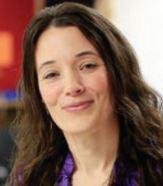Aerospace Engineering Engages Students
Advanced Career Aerospace Engineering
Kimberly Cortines teaches Aerospace Engineering, an Advanced Career curriculum. Cortines, who was recently honored as teacher of the year in her district, was first introduced to the idea of teaching the AC course by her secondary curriculum specialist.
Oak Hill High School, West Virginia
Cortines, excited at the opportunity to implement a curriculum that she knew would engage students at a deeper level, accepted the challenge. Initially, she was surprised the curriculum wasn’t for college students. “Usually, you’ve got your AP students, your honors students and your college-bound students grouped together, and you’ve got your vocational students who all go to the vocational building. They don’t take a lot of classes together and if they do end up, for example, in a history class together, the teacher really struggles with not having everyone on the same level,” she notes.
Curriculum for All Levels of Students
“The AC curriculum works well with all types of students. It is the first curriculum I’ve ever seen that works for both groups at the same time where everyone is engaged, everyone is learning to appreciate each other, and everyone is getting technical skills and concepts that will help them in the future. In a rural county where there are not a lot of jobs, AC gives students hope and skills to get out there and apply for things that they didn’t know existed.”
“Everyone is engaged, everyone is learning to appreciate each other, and everyone is getting technical skills and concepts.”
Cortines says the AC curriculum deepens students’ understanding of math. She believes the types of assignments her students are completing play an important role in the learning process. “I knew my students could grasp the math concepts. The problem was that they did not know it themselves. They learn at deeper levels when they are engaged in hands-on assignments.”
AC Reveals Relevance of Academic Courses
One of her favorite aspects of the AC curriculum is that it brings the concepts students learn in the classroom to life. The curriculum is grounded in the application of learned concepts to solve real-world problems. Cortines explains, “A typical complaint about math is that they [students] will never use what they’re learning outside of the classroom. They love to ask ‘when will we use this’ because they really want to see if you know the answer. AC students learn how to use math in practical ways; consequently, they gain more appreciation for math and develop a drive to learn it.” AC students make these connections because they learn constructive skills.
AC Addresses What Employers Demand
In AC classes, students engage in assignments that require them to work in groups, communicate effectively and synthesize information. Students learn to take initiative and ownership for their learning. From Cortines’ perspective, “We don’t focus enough on the 21st-century skills students need to be successful. My students have learned to work collaboratively in teams and work with difficult people; they have learned many skills that, even if they don’t go to college, will help them in a career of choice.”
Learning Through Mistakes
Because AC integrates content with real-world scenarios, students are more engaged and take more ownership for their work. When students own their work, they learn that failure is a part of the learning process. But, as Cortines notes, getting students accustomed to learning from their mistakes is a challenge. “In the beginning, it’s difficult for AP students to fail. It was hard for AP students who didn’t build their rockets correctly to watch them burn to the ground. But in AC they find that mistakes are an essential part of learning. I like being able to teach students that they can grow.”
Growing as Educators
In addition to helping her students grow, Cortines, with support from the Southern Regional Education Board, has grown as an educator. “I didn’t think I could teach aerospace. I almost left the training because I sat in a room of men who said they had all this engineering experience. I thought this is the wrong room for me, but I stayed and learned. I learned I could do it, and I loved it.”
Advice for Schools Considering AC
Cortines offers the following to any school considering adopting AC: “I think all schools should give it a try. We are short-changing our students with this old, antiquated way of teaching where math, English and science are separate entities. When these students walk out of high school, they are either going to go to college or they are going to struggle in these rural communities. We need to give them some skills to help them get a higher-paying job with or without college.”


